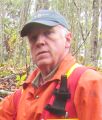YEAR IN REVIEW: “In 2017. the Partnership for Water Sustainability greatly enhanced the capabilities of the Water Balance family of tools to make real the vision for the ‘BC Framework’ for sustainable service delivery,” stated Ted van der Gulik, President, when reflecting on program accomplishments

No longer is asset management only about hard engineered assets – watermains, sewers, roads. Watershed systems are also “infrastructure assets”. Asset Management for Sustainable Service Delivery: A BC Framework sets a strategic direction that would refocus business processes on outcomes that reduce life-cycle costs and risks. “Financial support from three levels of government makes it possible for the Partnership for Water Sustainability to develop tools, resources and programs,” stated Ted van der Gulik.









